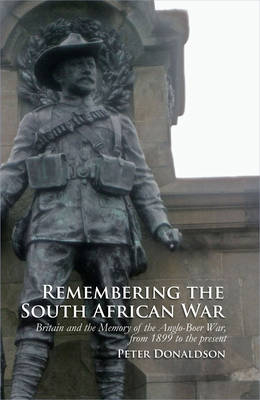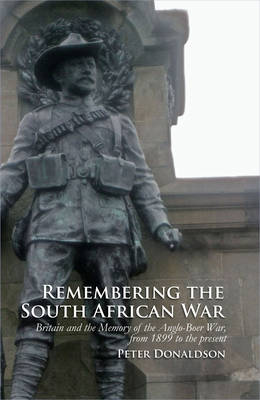
Door een staking bij bpost kan je online bestelling op dit moment iets langer onderweg zijn dan voorzien. Dringend iets nodig? Onze winkels ontvangen jou met open armen!
- Afhalen na 1 uur in een winkel met voorraad
- Gratis thuislevering in België vanaf € 30
- Ruim aanbod met 7 miljoen producten
Door een staking bij bpost kan je online bestelling op dit moment iets langer onderweg zijn dan voorzien. Dringend iets nodig? Onze winkels ontvangen jou met open armen!
- Afhalen na 1 uur in een winkel met voorraad
- Gratis thuislevering in België vanaf € 30
- Ruim aanbod met 7 miljoen producten
Zoeken
Remembering the South African War
Britain and the Memory of the Anglo-Boer War, from 1899 to the Present
Peter Donaldson
Hardcover | Engels
€ 111,95
+ 223 punten
Omschrijving
An Open Access edition of this book is available on the Liverpool University Press website and the OAPEN library.
The experience of the South African War sharpened the desire to commemorate for a number of reasons. An increasingly literate public, a burgeoning populist press, an army reinforced by waves of volunteers and, to contemporaries at least, a shockingly high death toll embedded the war firmly in the national consciousness. In addition, with the fallen buried far from home those left behind required other forms of commemoration. For these reasons, the South African War was an important moment of transition in commemorative practice and foreshadowed the rituals of remembrance that engulfed Britain in the aftermath of the Great War. This work provides the first comprehensive survey of the memorialisation process in Britain in the aftermath of the South African War. The approach goes beyond the simple deconstruction of memorial iconography and, instead, looks at the often tortuous and lengthy gestation of remembrance sites, from the formation of committees to the raising of finance and debates over form. In the process both Edwardian Britain's sense of self and the contested memory of the conflict in South Africa are thrown into relief. In the concluding sections of the book the focus falls on other forms of remembrance sites, namely the multi-volume histories produced by the War Office and The Times, and the seminal television documentaries of Kenneth Griffith. Once again the approach goes beyond simple textual deconstruction to place the sources firmly in their wider context by exploring both production and reception. By uncovering the themes and myths that underpinned these interpretations of the war, shifting patterns in how the war was represented and conceived are revealed.Specificaties
Betrokkenen
- Auteur(s):
- Uitgeverij:
Inhoud
- Aantal bladzijden:
- 193
- Taal:
- Engels
Eigenschappen
- Productcode (EAN):
- 9781846319686
- Verschijningsdatum:
- 8/08/2013
- Uitvoering:
- Hardcover
- Formaat:
- Genaaid
- Afmetingen:
- 155 mm x 236 mm
- Gewicht:
- 498 g

Alleen bij Standaard Boekhandel
+ 223 punten op je klantenkaart van Standaard Boekhandel
Beoordelingen
We publiceren alleen reviews die voldoen aan de voorwaarden voor reviews. Bekijk onze voorwaarden voor reviews.











